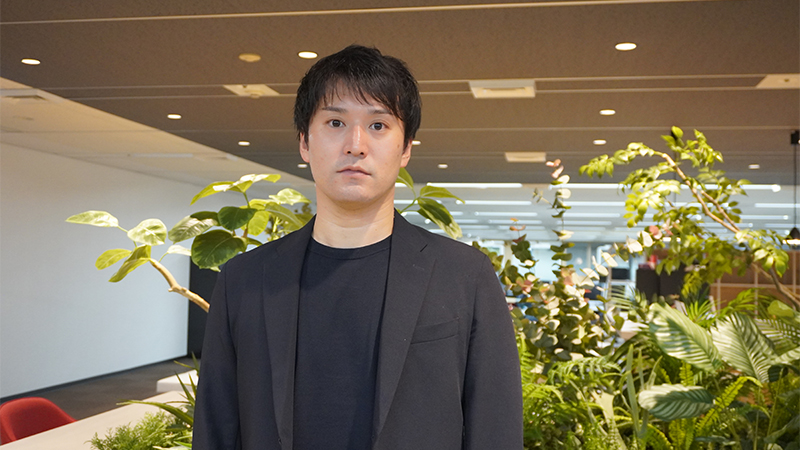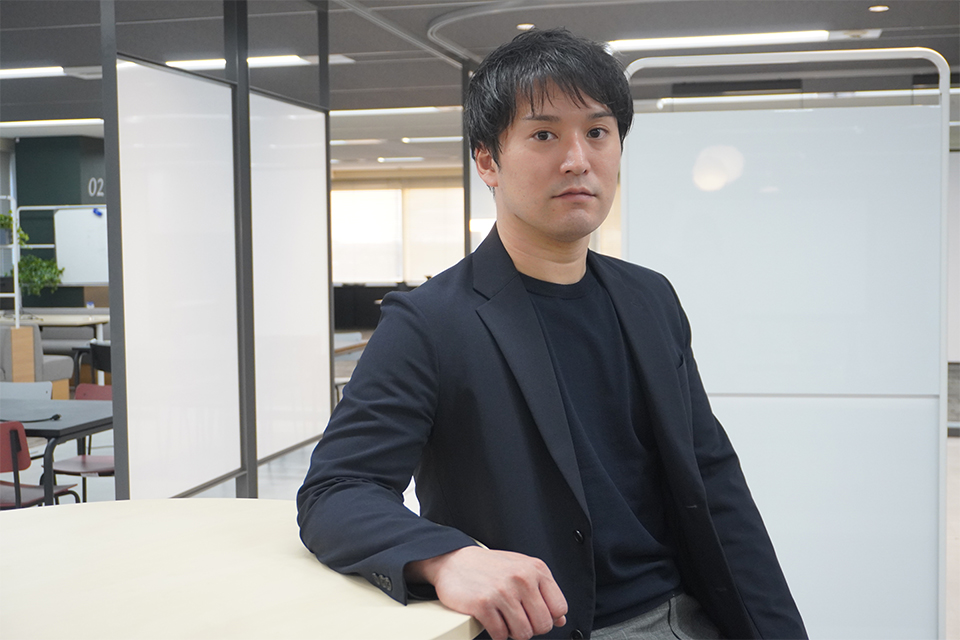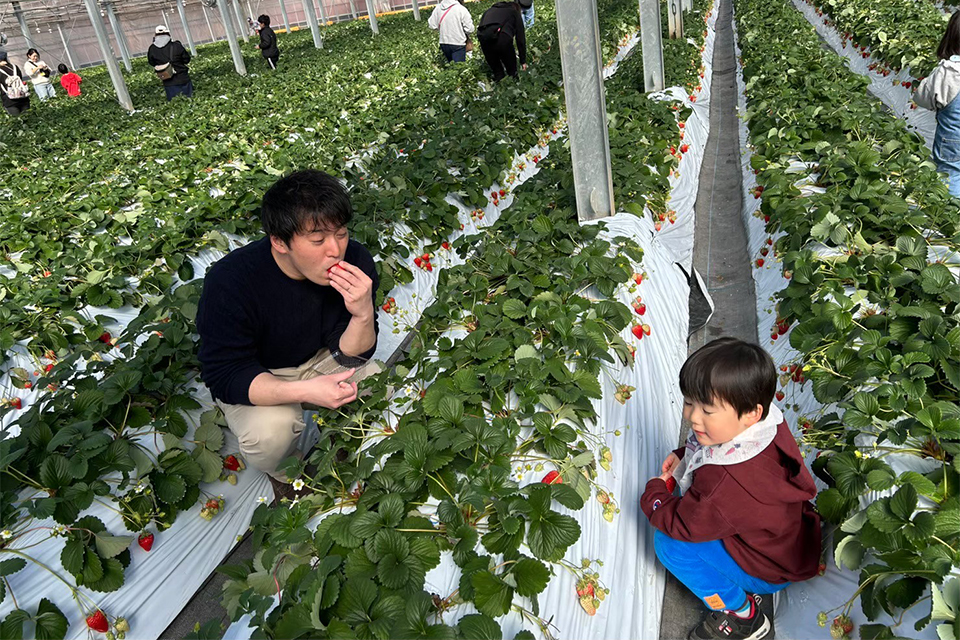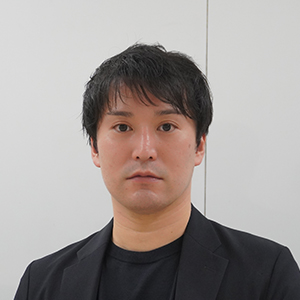Fascinated by computational science’s power to simulate the microscopic world
Yuta YoshimotoComputing Laboratory

Applying computational science to simulate the microscopic world
Since childhood, I’ve excelled in math and science, particularly enjoying the logical process of working through drills to arrive at a final answer. I also spent a lot of time playing cat's cradle and practicing origami. I'd pore over origami books, fascinated by how a flat piece of paper could be transformed into a three-dimensional object, meticulously following the instructions. This logical thinking proved invaluable when choosing my university major and subsequent career path.
At university, I delved into the development of atomic-level simulation techniques, captivated by the power of computational science to simulate the microscopic world. The properties of matter and the phenomena they exhibit are determined by the movement of atoms and molecules. While the behavior of individual atoms and molecules follows simple physical laws, their collective interaction gives rise to the diverse properties we observe in the macroscopic world, from the viscosity of liquids to the hardness of solids. I was fascinated by how simple laws governing the microscopic world could lead to the complex phenomena of the macroscopic world.
Before joining Fujitsu, I conducted research in computational science and taught students at university. However, I felt strongly that truly to benefit society, research findings needed to go beyond academic publications and be translated into practical applications and products. With the goal of expanding my skillset and bringing my research to fruition, I joined Fujitsu, drawn by the opportunity to collaborate with experts in AI, materials science, and computational science.
Dramatically accelerating materials development
I am currently working on developing AI-driven atomic simulation technology. This technology can reduce the time required for analyzing material properties from several months to just a few days or weeks, significantly accelerating materials development for chemical and materials manufacturers. By leveraging AI, we can achieve accuracy comparable to first-principles calculations (a method for precisely calculating interactions between atoms), while drastically reducing computational costs, enabling larger-scale and longer-duration simulations.
However, AI-driven simulations are more challenging than traditional methods when it comes to ensuring computational stability and physical validity. In the early stages of development, we often found ourselves in a situation where solving one problem would immediately reveal another. For example, we encountered various issues such as abnormal interactions between atoms during calculations, causing the simulation to halt. I vividly remember one sleepless night after finally achieving the target scale and accuracy of our simulations, having overcome each of these challenges one by one. Going forward, I aim to commercialize software incorporating this technology and contribute to the acceleration of materials development. I would be thrilled to see our software widely adopted and utilized by those involved in materials research.

Creating AI models capable of long-time, stable, and large-scale simulations
Our technology calculates the movement of atoms based on physical laws and derives various physical properties (e.g., density, thermal conductivity, diffusion coefficient) through statistical analysis of the vast amount of data generated. While some approaches use AI models directly to predict specific material properties, these are limited in their application. Relying solely on AI without incorporating physical laws reduces versatility. To address this, our AI model is built upon fundamental physical laws, allowing us to calculate a wide range of physical properties from the atomic information obtained. Unlike methods specialized for specific physical properties, our strength lies in its ability to handle a broad spectrum of properties. It meets the demand for AI models capable of performing long-time, stable, and large-scale simulations, and its potential applications extend beyond materials development.
Unwavering parental support
I am deeply grateful to my parents for their unwavering support. They always encouraged me to pursue my interests, whatever they may be. They were always there to cheer me on, rarely telling me what to do and instead trusting my judgment. I believe I developed my sense of initiative, the ability to think and act independently, thanks to them. Now, as a parent myself, I strive to create a similar environment for my children, one that respects their autonomy and encourages them to embrace new challenges.
On my days off, I often spend time with my family, going on outings to recharge. My son loves aquariums and zoos, so we often visit them together and have a wonderful time. I also enjoy going out for drinks with my colleagues. When I face challenges at work, I often consult with them or sleep on the problem, finding that a fresh perspective in the morning often leads to good solutions. Many of my friends play golf, and it's something I'd like to try someday.

Focusing on innovative technologies, capable of societal impact
Even when faced with new challenges, I persevere, meticulously analyzing the causes and tenaciously experimenting until a solution is found. This stems from my belief in "thoroughly exploring a subject until I fully understand it." My approach to problem-solving begins with rigorous research, carefully examining relevant papers and other resources. Based on this research, I develop and execute a plan. If things don't go as expected, I analyze the cause, identify the problem, then explore and implement solutions. I find great fulfillment as a researcher in this iterative process of analysis and improvement, diligently working towards the optimal solution.
Currently, I'm focused on AI-driven atomic simulation, but I'm also keenly interested in quantum computing. I believe that integrating diverse technologies is essential for creating new value with significant societal impact. Looking ahead, I want to broaden my expertise and pursue innovative technological developments that combine AI, computational science, and quantum computing.
Messages from colleagues
Yuta is a materials simulation expert, who joined Fujitsu as a mid-career hire after completing his Ph.D. and working at a university. Leveraging Fujitsu's strengths in computing and AI, he has achieved remarkable results in developing innovative materials simulation technologies. In addition to his expertise, his sincerity and proactive nature have earned him the trust of colleagues and external partners alike, leading to numerous collaborative achievements. Currently, his team is in the practical application phase of their development, and I am confident that with his high level of expertise and strong interpersonal skills, he will successfully implement this innovative technology and further strengthen customer trust. We are very excited to see his future contributions, as he continues to leverage his academic knowledge. (Yasufumi Sakai, Senior Research Manager, Computing Laboratory)

Titles, numerical values, and proper nouns in this document are those reported when this interview was made.




